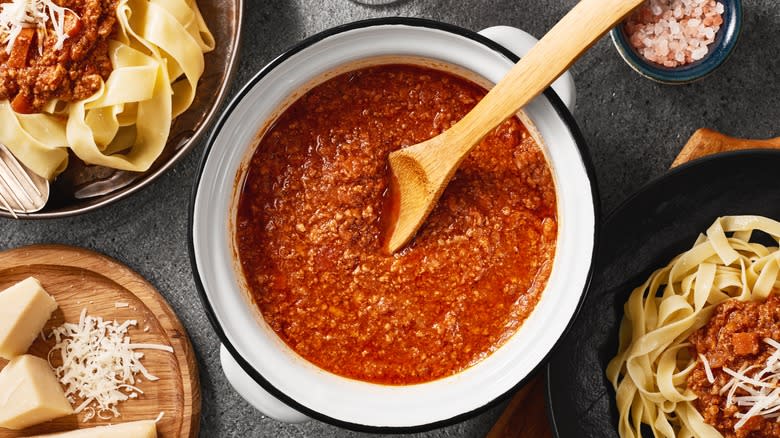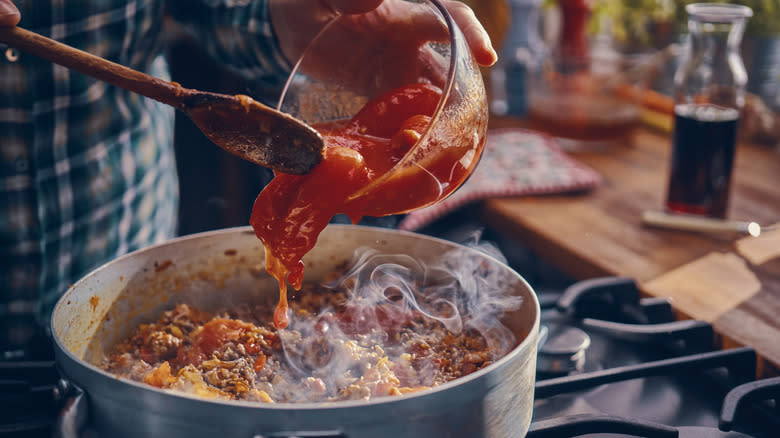The Secret For Robust Bolognese Is To Slow Roast It In The Oven

We've shown you how to make classic ragu alla Bolognese sauce on the stovetop, but have you tried it roasted? It's not the same. Oven-roasting injects new life into Bolognese so that everything you love about the sauce intensifies: the rich gets richer, the thick gets thicker, and the creamy gets creamier. Best of all, the sauce gets 'saucier' — if there is such a thing. Long hours of it bubbling away in the oven leave it reduced to a supremely delicious Bolognese.
While cooking your Bolognese on the stove top gets the job done, slow-roasting gets it done beautifully — the secret lies in the process of heat transfer. A stove tends to heat food directly and from the bottom of the pan, meaning the sauce reaches its full flavors quickly. Compare that to the oven, where hot, circulating air subjects Bolognese sauce to a much steadier simmer, allowing the flavors to develop slowly and perhaps deliberately.
The result of slow-roasting Bolognese in the oven is that the aromas intensify and become readily available. Imagine how the flavors of a stovetop sauce slowly register on your palate. With oven-roasted Bolognese, the aromas strike you instantly. They're brimming on the surface of the sauce and throughout to deliver a hearty Bolognese experience in each spoonful.
Read more: 26 Types Of Pasta Sauce Explained
Switch Your Stovetop Bolognese To Slow Roast

If you already have a favorite Bolognese sauce recipe, you know most of what you need to do. Otherwise, take our rich turkey tomato Bolognese recipe as a starting base. Begin with an oven-proof pot and follow the recipe when building the Bolognese. That means fry the mince (and chopped vegetables, if you're adding any) on the stove. Add in white wine and ingredients for the base of the sauce such as tomato puree and bring the mixture to a boil.
The main adjustment comes when simmering the sauce. Instead of doing so on the stove, transfer the pot to the oven and roast the sauce for up to four hours. The sauce gets thicker the longer it cooks, and a brown, caramelized layer forms on the top and sides of the pot. You may also notice a layer of fat separate from the sauce and cover it — that means it's ready. Simply use a spoon to scoop the fat out, leaving a fair bit of amount to continue the cooking process.
Then, like you would on the stove, add milk to the pot and cook the sauce for another 10 minutes. Your sauce is ready to serve once it's simmering again. You can taste the difference between the regular stove top version and the oven one immediately. Expect the vocabulary of feedback for your slow-roasted Bolognese to range from "rich" to "deeply savory," including "robust," "hearty," and "truly wholesome."
Read the original article on Tasting Table.

